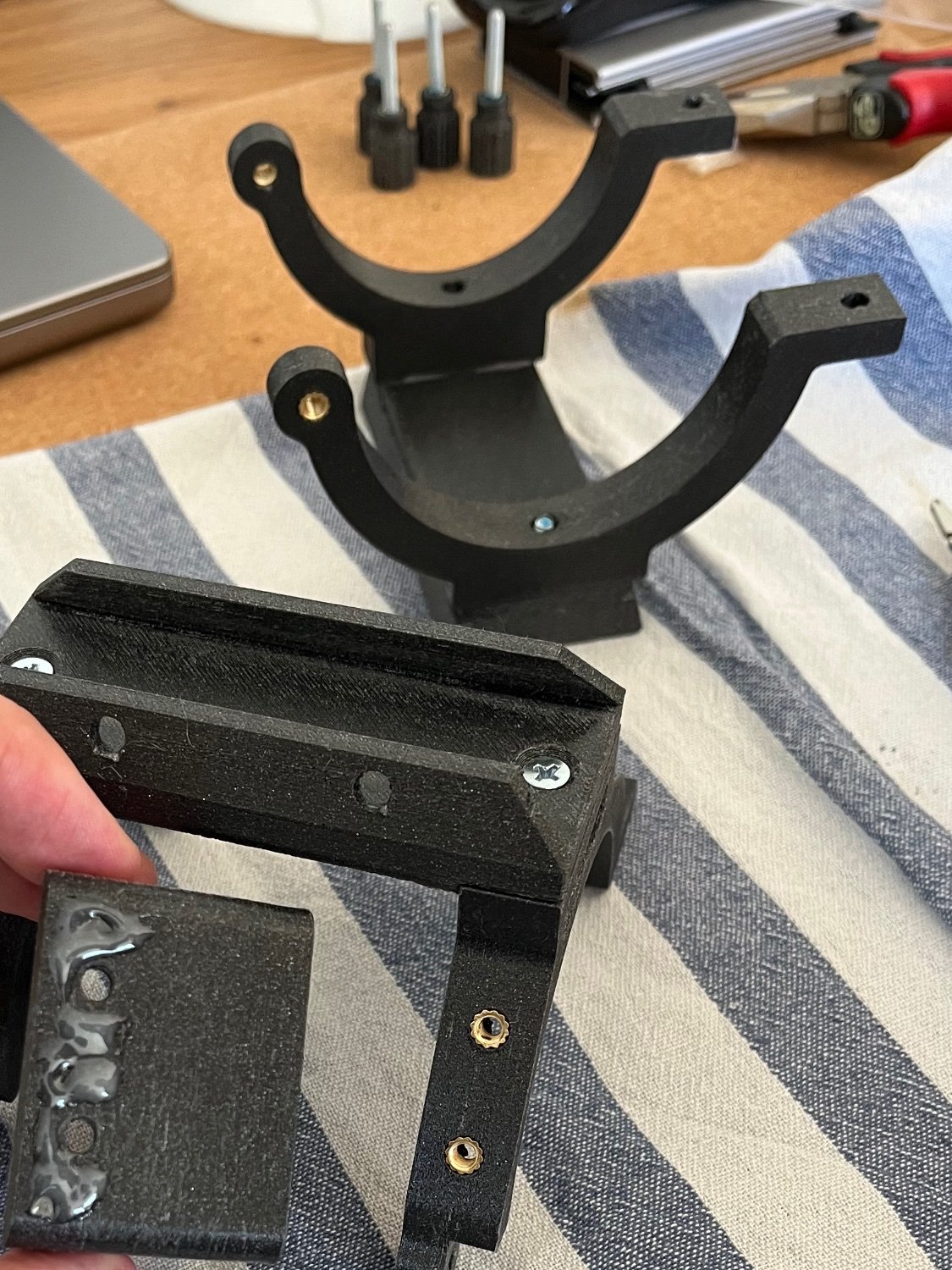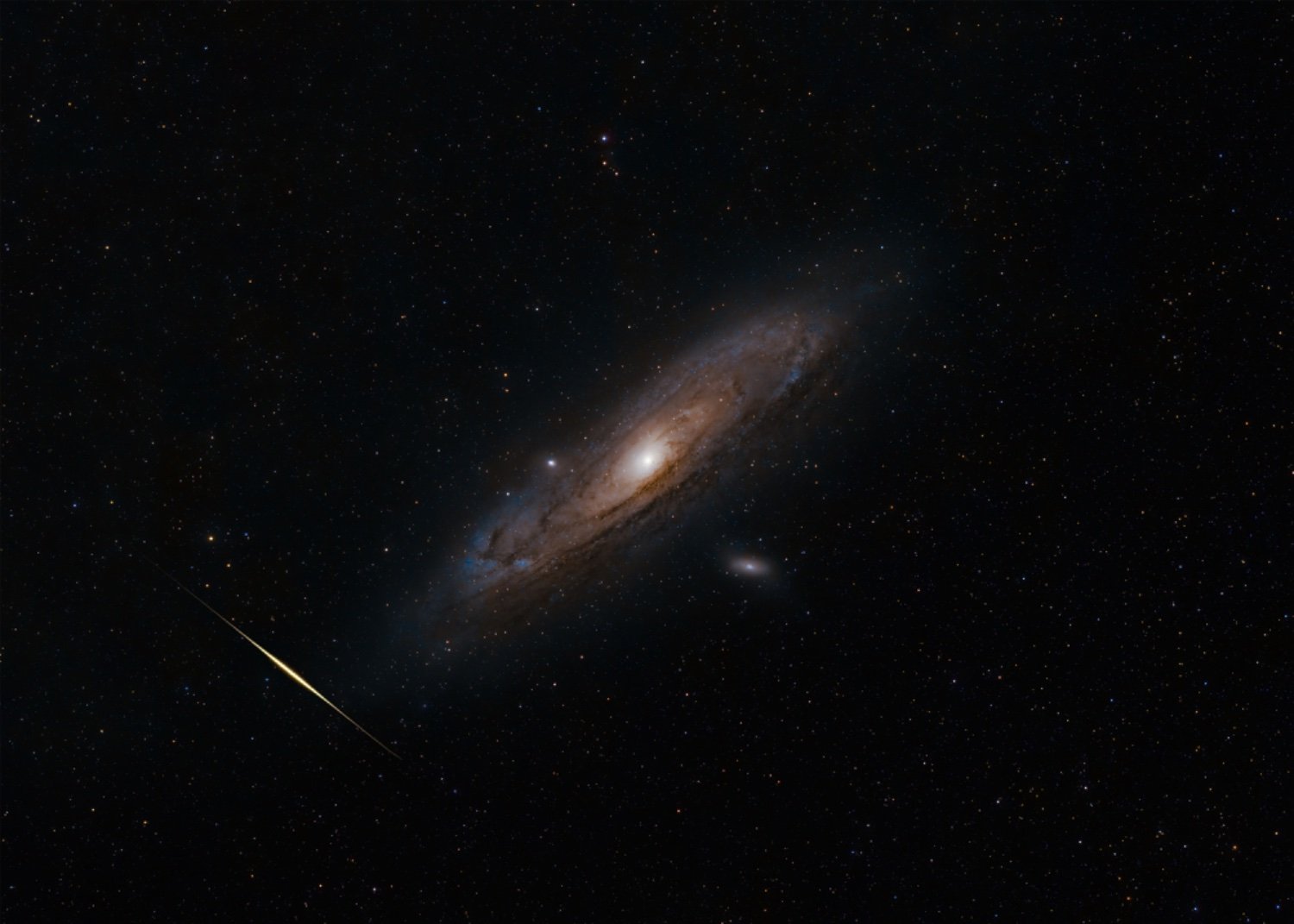Thank you! Andromeda is way bigger than most people think. That’s the reason why it is a very (maybe the most) popular target for beginners. Also there went a lot of processing into the image, so don’t let the image deceive you from the actual conditions where I live (Bortle 5 zone)
bistdunarrisch
The lens is the telescope in this case. But as the focal length of 135mm is fairly short it works best for objects appearing very large in the sky. Astrophotography can get very expensive very quickly, so we try to make the most out of the equipment we have. Just like with the 3d printed mount.
The Samyang 135mm f2.0. In some markets it‘s also called Rokinon
Thank you! I agree, it really is an amazing topic.
Glueing and screwing the parts:

One result shot with this mount (and many other accessories):

Very interesting, thank you for sharing. Your linked gif makes it very apparent that it was indeed a satellite.
I also searched in Stellarium and found a decommissioned military satellite called STSS Demo 2 that fits the path and time stamp perfectly.
-9 magnitude is insane, must’ve been a very cool sight.
Thank you!
Ha, thanks for letting me know. I didn’t know satellites can create flares like this. As all the other satellites were so dim I assumed it had to be something different.
For editing I chose the single sub with the flare and screen blended it in photoshop.
Beautiful, thanks for sharing!
Thanks!
Yes processing the image plays a huge role.
But at the end you can only work with the information provided by your equipment as there are physical limitations on what one can capture.
To me the most interesting part of this hobby is to learn what you physically really have to do to get good images. Physics not only plays a role on understanding what we see in these images but also on how to make them.
Truly fascinating!
This lens is incredibly sharp and produces nearly no coma. Also the image is super flat and the lens also works for full frame cameras. For its high image quality it‘s also used by some more advanced astrophotographers.
As I bought it new for 400€ this was a no brainer because we can also use it for 'normal' photography.
I‘m sure your lens works well for many nebulae!